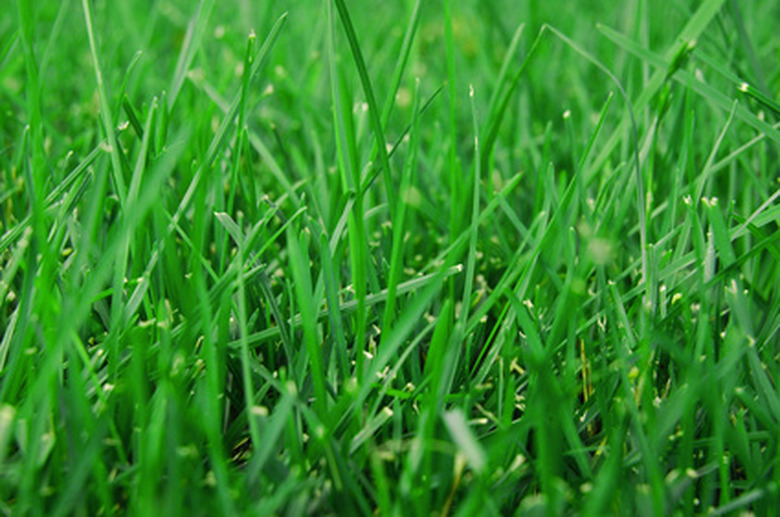What Causes Zoysia Grass To Turn Yellow?
Zoysia grasses are native to Asia. One variety, introduced to the United States from Manila, Philippines, was commonly called Manila grass. The genus name is a memorial to Karl von Zois, an 18th-century botanist. Zoysia does well in warm climates and produces a lush, green lawn. The grass goes brown in winter but makes an early comeback in spring, beating other varieties in the race to turn green. Zoysia is not only a domestic use turf, but its adaptability makes it a good choice for golf courses, ball fields and parks.
Leaf Spot
Leaf Spot
Zoysia grass will begin to turn its dormant color as soon as temperatures cool. The warm days and cool nights that precede the weather change also cause leaf spot. The grass develops yellow and brown lesions on the blades, when the sod is overly dry and there has not been proper fertilization high in nitrogen. The lesions develop into spots with distinctive shapes and patterns. The cure is increasing water and fertilizing well to increase the nutrient content of the soil.
Nematodes
Nematodes
Nematodes, a type of microscopic parasite, can cause the top of zoysia grass to yellow. Root knot, root lesion and dagger nematodes could be the culprits. Each of these can be present in zoysia grass, stunting its growth. Root lesion nematodes will also cause black lesions around the root area. Root knot nematode symptoms include wilting blades and knots or galls on the roots. Dagger nematodes produce a stunted root system with reddish-brown to black lesions on the roots. Poor water retention and warm temperatures increase the effects of an abundance of nematodes.
Take All Patch
Take All Patch
The grass problem with the funny name can leave your turf yellow all across the lawn. It spreads more in wet and cool weather and begins to cause the roots to die. In warm weather, you will notice the first symptoms from the spread of the disease. You will be able to pull up the grass easily since it is not rooted. Aeration and maintaining good drainage are crucial to management of this disease.
Chinch Bugs
Chinch Bugs
Chinch bugs are small insects with black bodies and white wings. Nymphs are pinkish-red with a stripe across their bodies. The damage they cause can generally be seen near the edge of the lawn in a sunny location. The grass will die in patches, surrounded by yellowing grass. Hot, dry weather increases the effect. Pesticide use will kill beneficial insects, so the best solution is spot-treating infected areas with insecticidal soap and increasing the health of the lawn with proper irrigation.
Iron Chlorosis
Iron Chlorosis
Iron chlorosis occurs when the soil pH and phosphorus content are high. Grass blades are not able to take up proper nutrition and will yellow and stunt. Treat chlorosis by amending the soil to lower its pH and increase acidity. Granular sulfur applied like fertilizer in a rotary or drop spread unit may help chlorosis. Ideally, the soil should be tested before turf is laid, when it can be easily amended.
